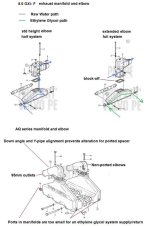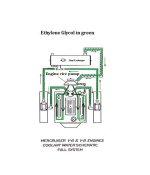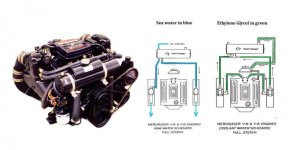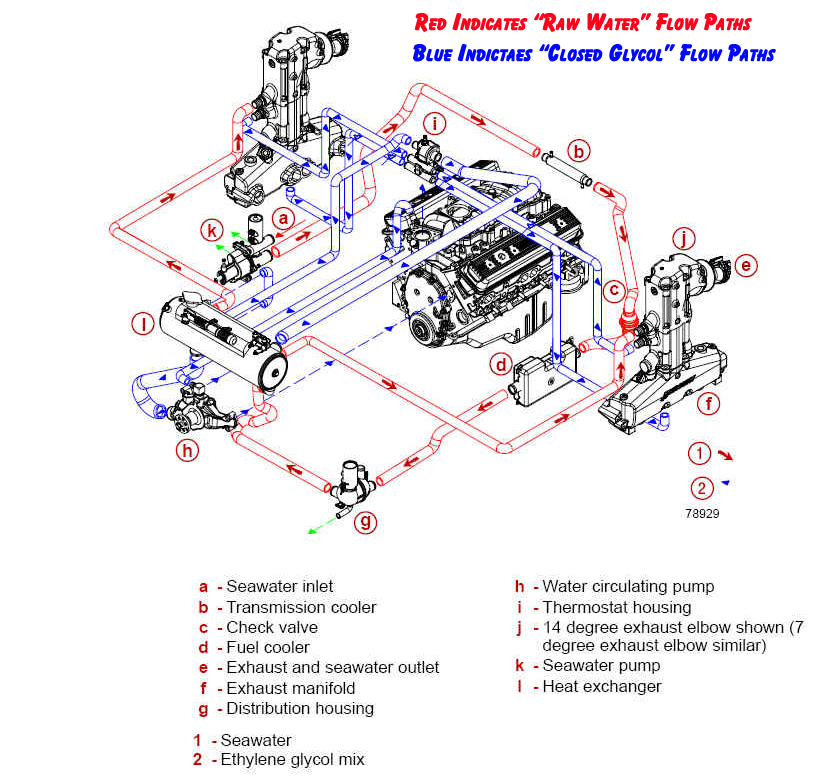The problem of wall thickness did occur to me, specially since
the engine has seen 400 hrs (although in fresh water)
Engine block wall thickness... or exhaust component wall thickness?
I notice that the Merc elbows have boss's cast into the outer walls to allow for a thicker area for threading.
Below is an image that I put together for you. Your 5.0GXi-F manifolds and elbows should be similar.
The tall elbow style should be equipped with threaded ports. I'm not sure if these adequate for the correct size fittings.
I had determined that if I go this way, then I would machine up a couple of cast iron or naval bronze boss's and braze them to the elbows and then drill and thread them.
If the elbows are not ported from the factory, Volvo Penta may have good reason for not doing so.
The idea of a thick plate machined so as to permit the attachment of two water feeds does make sense as this could then be supplied as part of a kit for Volvo engines.
I believe that you're talking about a ported spacer or riser.
Depending on the location of the "block-off", these can be used to add porting to an elbow (block-off below)....... or they can be used for an additional manifold port (block-off above).
If Volvo Penta indended for this model to be "Full System" cooled, then yes.... a kit may include this "Ported Spacer/Riser" for the raw water supply to the elbow.
You must also consider the E/G coolant flow TO and OUT of the exhaust manifold.
If the OEM ports are not large enough, a "Full" system may not work.
I have one question: what diameter hose is required on these fittings??, as this will determine the plate thickness. Longer bolts will be required but this is not a determining problem. Should the plate be made from bronze or SS?? the bronze is much easier to machine of course especially for milling.
This would be your design......
My "SELOC" manual arrived while typing this and it does not talk about AQ series engines.
Toss the Seloc manual in the recycle bin, and purchase a Volvo Penta OEM work shop manual. (too many errors in the seloc)
I have had a good look at the elbows and they are very similar to images I have seen on utube of the Merc ones, they are held down by 4 bolts onto the manifolds.
Correct!
I guess I do have one real concern, can this retrofit be done easilly with the engine in situe?
Yes!
Which ever kit I get it would seem that the determining factor will be the capacity of the raw water pump,
That and the exhaust manifold porting, and whether or not the elbows can be blocked-off, and can be fed seawater without restrictions.
the although with the 26" long heat exchanger,this may solve the problem.
The length/size/capacity of the H/E is not your only concern.
Half system = a very simple coolant outlet to the Engine Circulating pump, and a very simple single coolant return to the H/E shell.
Full system = a very simple coolant outlet to the Engine Circulating pump, but a more complex coolant path for feeding the manifolds and returning from the manifolds to the H/E, and the engine coolant return path to the H/E.





